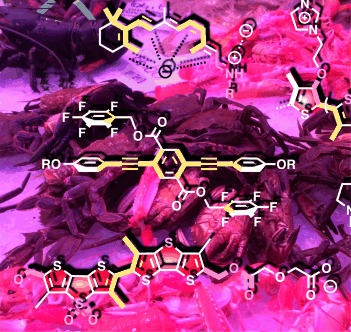- Dal Molin, M.; Verolet, Q.; Soleimanpour, S.; Matile, S. “Mechanosensitive Membrane Probes” Chem. Eur. J. 2015, 21, 6012-6021

This article assembles pertinent insights behind the concept of planarizable push–pull probes. As a response to the planarization of their polarized ground state, a red shift of their excitation maximum is expected to report on either the disorder, the tension, or the potential of biomembranes. The combination of chromophore planarization and polarization contributes to various, usually more complex processes in nature. Examples include the color change of crabs or lobsters during cooking or the chemistry of vision, particularly color vision. The summary of lessons from nature is followed by an overview of mechanosensitive organic materials. Although often twisted and sometimes also polarized, their change of color under pressure usually originates from changes in their crystal packing. Intriguing exceptions include the planarization of several elegantly twisted phenylethynyl oligomers and polymers. Also mechanosensitive probes in plastics usually respond to stretching by disassembly. True ground-state planarization in response to molecular recognition is best exemplified with the binding of thoughtfully twisted cationic polythiophenes to single- and double-stranded oligonucleotides. Molecular rotors, en vogue as viscosity sensors in cells, operate by deplanarization of the first excited state. Pertinent recent examples are described, focusing on λ-ratiometry and intracellular targeting. Complementary to planarization of the ground state with twisted push–pull probes, molecular rotors report on environmental changes with quenching or shifts in emission rather than absorption. The labeling of mechanosensitive channels is discussed as a bioengineering approach to bypass the challenge to create molecular mechanosensitivity and use biological systems instead to sense membrane tension. With planarizable push–pull probes, this challenge is met not with twistome screening, but with “fluorescent flippers,” a new concept to insert large and bright monomers into oligomeric probes to really feel the environment and also shine when twisted out of conjugation.
open archive unige:55653 • pdf ![]()
